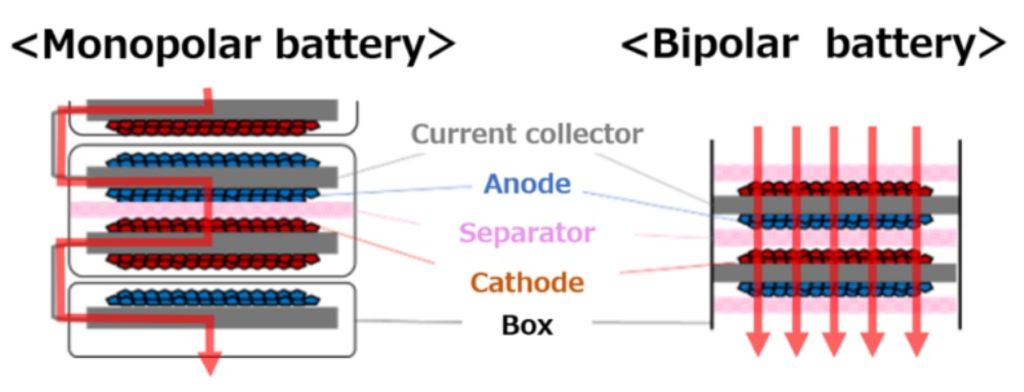After announcing a new battery electric vehicle factory that will begin churning out new models in 2026, Toyota has revealed new details about the new, advanced batteries that will power its next-generation EVs.
The Japanese automaker will rely on four next-generation battery types, three with new liquid electrolyte battery technologies and one with solid-state battery technology.
Toyota says these batteries will power 1.7 million of the 3.5 million BEVs Toyota expects to sell worldwide by 2030. The new generation of battery technologies will be key to appealing to a wider customer base.
Starting with the liquid electrolytes, which are the current mainstream battery technology for BEVs, Toyota said it is working on all-round improvements, including higher energy density, cost competitiveness, and charging speeds.
The three main battery types under development are called Performance, Popularization, and High-Performance.
The Performance battery with lithium-ion chemistry is planned to debut in Toyota’s next-gen BEVs from 2026, increasing driving range to more than 497 miles with the help of improved vehicle aerodynamics and reduced vehicle weight.
The Performance battery is also expected to offer a 20 percent cost reduction compared to the current Toyota bZ4X electric SUV and a fast charging time of 20 minutes or less from 10 to 80 percent state of charge (SOC).
The Popularization battery will have lithium iron phosphate (LFP) chemistry and will be a lower-cost, albeit high-quality, option. Constructed using the bipolar technology Toyota pioneered for its nickel metal-hydride (NiMH) batteries, the battery is expected to reach the market in 2026-2027.
The automaker expects the new battery tech to offer a 20 percent increase in driving range compared to the Toyota bZ4X and a 40 percent reduction in cost compared to the current electric SUV. As of charging, the Popularization battery should have a fast recharging time of 30 minutes or less from 10 to 80 percent SOC.
The third type of liquid electrolyte battery, called High-Performance, uses a lithium-ion chemistry in combination with a high nickel cathode to achieve a driving range capability of more than 621 miles, when combined with improved aerodynamics and reduced vehicle weight.
Toyota expects a further 10 percent reduction in cost compared to the Performance battery and a DC fast charging time of 20 minutes or less for 10-80 percent SOC. This battery is planned to debut in 2027-2028.
Moving on to solid-state batteries, Toyota claims it has made a breakthrough regarding the durability of this technology. The company’s solid-state lithium-ion batteries have a solid electrolyte that’s said to allow for faster movement of ions and a greater tolerance of high voltages and temperatures.
As a result, these batteries are suitable for rapid charging and discharging and delivering power in a smaller form. The trade-off for that has been an expected shorter battery life, but Toyota claims to have overcome this challenge, with recent advances accelerating the production timeline.
According to Toyota, the goal is for the solid-state batteries to be ready for commercial use by 2027-2028 in next-generation BEVs – Toyota initially planned to introduce its solid-state batteries in hybrid vehicles.
Toyota expects its first solid-state battery to offer a 20 percent increase in driving range compared to the Performance battery – approximately 621 miles – and a fast charging time of 10 minutes or less from 10 to 80 percent SOC.
The carmaker says it already has a higher specification li-ion solid-state battery under development, targeting a 50 percent improvement in cruising range compared to the Performance battery – that would work out at 745 miles of range.
Besides improving the performance of its next-generation batteries, Toyota is also interested in optimizing battery height to improve aerodynamics and therefore range. Since the battery is located beneath the vehicle floor, it has a direct impact on the vehicle’s overall height, which in turns affects aerodynamics and range.
A reduction in battery height results in a lower vehicle overall height, which is why the carmaker plans to reduce battery height to 4.72 inches (120 millimeters), compared to the Toyota bZ4X‘s battery height of around 5.9 in (150 mm). In the case of high-performance sports BEVs, battery height will be reduced further to 3.93 in (100 mm).




